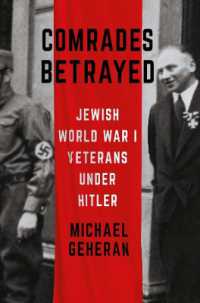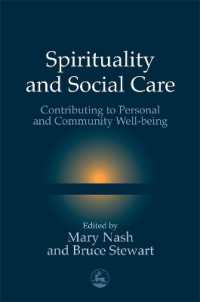Full Description
London in the 19th century saw the founding of the National Gallery, the National Portrait Gallery, the Victoria and Albert Museum and the Whitechapel Art Gallery. Other, less permanent organizations also flourished, among them the British Institution, watercolour societies and the Society of Female Artists. In this work, 11 scholars, experts on the individual institutions, analyze their complex histories to investigate such issues as: how did they generate and redesign their publics?; what identities did they create?; what practice of art making, connoisseurship and spectatorship did they enshrine? These reports elucidate the values associated with the key institutions and describe the responses and adaptation over time to major cultural developments - new movements, political change and the development of the Empire. As a whole the volume offers an account of the interconnections between these key institutions. Challenging conventional readings of the subject, the introduction, written by the editors, offers a definition of public art during the Victorian period.
Contents
Introduction19th-century London, Paul Barlow and Colin Trodd. Part 1 National taste - from lite to public?: the paths to the National Gallery, Colin Trodd; the British Institution, Nicholas Tromans; representing the Victorian Royal Academy - the properties of culture and the promotion of art, Colin Trodd; "Fire, flatulence and fog" - the decoration of Westminster Palace and the aesthetics of prudence, Paul Barlow. Part 2 Communal taste - institutional discriminations: the Society of Female Artists and the Song of the Sisterhood, Stephanie Brown and Sara Dodd; the cultivation of mind and hand - teaching art at the Slade School of Fine Art 1868-92, Emma Chambers; an art suited to the "English middle classes?" - the watercolour societies in the Victorian period, Greg Smith; "The advantages of combination": the Art Union of London and state regulation in the 1840s, Duncan Forbes; Part 3 Contradicting tastes - public art, the mass and the modern: the National Portrait Gallery and its constituencies 1858-96, Lara Perry; consuming empire? - the South Kensington Museum and its spectacles, Paul Barlow and Shelagh Wilson; "the highest art for the lowest people": the Whitechapel and other philanthropic art galleries 1877-1901, Shelagh Wilson; a "state" gallery? - the management of British art during the early years of the Tate, Alison Smith.








